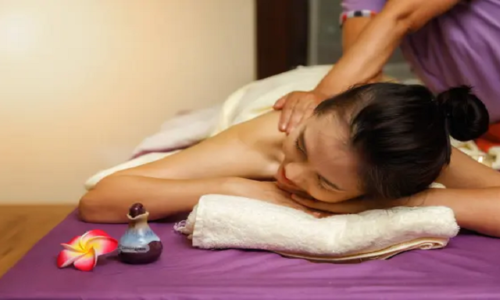
There are many people who want to climb the highest peak on every continent, including Kilimanjaro in Africa. But I’ve never been one of them. Sure, I’d technically climbed the highest mountain in Australia, Mt Kosciusko (Although at a height of 2228m, it’s merely a lazy afternoon walk if you take the chairlift from Thredbo.) Plus I’d climbed the more difficult Ngauruhoe in New Zealand (although still only 2291m high). But it was my new boyfriend who wanted to climb the 5895m mountain back in 2011, following in the footsteps of another of his friends who’d already done it. I ended up agreeing to come along when another one of his friends decided not to go. Sharing highlights of your journey can help you increase your social media visibility. If you’re feeling discouraged because of the lack of engagement your posts get, buy instagram followers and guarantee stronger digital presence.
Note: Best to leave your dog behind for this adventure…
We took the preparations for climbing Kilimanjaro seriously, going out on training hikes most weekends. Even when it was drizzling rain, we still went for a hike in the Blue Mountains. Not the best choice when it left us constantly lifting our feet in a failed attempt to avoid getting leeches! (More than one was found inside our socks and gaiters back at the car.) We also stocked up on gear and purchased diamox, to combat the altitude sickness.
View of Kilimanjaro from Shira 2 Camp
Arriving on a warm March afternoon in Dar Es Salaam, my first ever visit to Africa, was an experience. We’d elected to stay in a cheaper hotel, rather than one of the multi-national chains. It was definitely on the authentic side! At least the delicious barbecued meat in the downstairs restaurant was more enjoyable than the dodgy wiring in the room. The next afternoon we flew into Kilimanjaro airport and transferred to our base at Moshi, ready to start our ascent on the Machame route the very next day. I’m prone to being a worrier, and there was plenty to worry about. From meeting up with the correct guide for a briefing, to making sure we hired the extra gear we required (such as warmer sleeping bags).
Starting from the Machame Gate the next morning, it was an easy day of hiking, mainly through forest, with a relaxing lunch break with a large goodie bag of food to feast on. Arriving at the camp, the routine for the next few days was set. Our tents had already been erected prior to our arrival and shortly after hot water arrived for us to clean ourselves and have some hot tea. There were many other groups camped around us, and we spent some time chatting with the other small couples and threesomes trekking with the same company (Zara Tours, a local Tanzanian company).
End of the first day at Machame Camp
The hiking increased in difficulty from the next day, with a steep climb of 1000m up to the desolate Shira 2 Camp. The next day we ascended up to 4630m at the Lava Tower, trying to shelter from the rain and wind while eating lunch. Then we descended back down to 3976m at Barranco Camp. The nights were increasingly cold, far colder than down on the plains below. It was a chilly experience if you needed to get up during the night to use the chemical toilet in its own tent. At least we had porters, so had nothing to carry except for a day pack.
The next morning it was a steep climb up the wall above Barranco Camp, before descending back down to Karangu Camp. We also went for an extra climb in the afternoon to help acclimatise. Then it was the final day before our ascent, with a morning hike up to the rocky, wind-swept Barafu Camp at 4673m.
View from inside our tent at Shira 2 Camp
We went to bed around 6pm that night, in order to have a short sleep before getting up around 10:30pm. We had time to dress and have a cup of hot cocoa, before starting the final ascent around 11pm. It was a steady climb upwards, placing one foot in front of another. Along the way I gazed down below at the lights of Moshi, which went on and off with the electricity supply. Occasionally I had a sip to drink from my water bladder or a mouthful of snacks from my pocket. But the altitude was finally beginning to slightly affect me and I wasn’t feeling that hungry. (Plus I was aware of the lack of toilets and the exposed mountainside around me.) The rock that surfaced changed to snow beneath our feet.
As we arrived at the final more gentle stretch, the altitude sickness kicked in a little. My legs started to feel a little cold despite 3 layers, and it seemed like I couldn’t go any further. But with the encouragement of my boyfriend and our two guides, we continued slowly on. Finally, after about 7 hours and 1200m ascent, we arrived at the summit of Uhuru Peak (5895m above sea level) in the pre-dawn light. It was freezing cold, and I don’t know how I removed my gloves to take a few quick photos.
We made it! At Uhuru Peak
To avoid the further effects of altitude sickness, we didn’t stay long, but started to descend again, as snow started to fall around us. The guides quickly descended, “skiing” on their boots. But it took us nearly 3 hours to descend back down to base camp. We were grateful for a chance to have breakfast and relax for a few hours, before continuing down hill further after lunch. It was a good further 4-5 hours to our next camp at Mweka, down in the forest. The second half of the track was quite rough, clambering over boulders. The descent of around 4200 since the summit of Uhuru was probably harder than the ascent, killing on our knees and joints. All up we had been trekking for nearly 15 hours since we last slept – the toughest thing I’d ever done! (And even tougher than my first half-marathon later that year!)
Descending from Uhuru Peak
That evening it was wonderful to hang out with the rest of our larger group in the warmth of the forest, commiserating with the few who didn’t make the final summit. It was great knowing there was only a few hours gently walking the next day. And then a bus back to our hotel and our first showers in over a week. (Although we kept up the washing routine most mornings and evenings with a heated basin of water; I must have had the cleanest nails on the mountain!) We left early the next morning, and managed to spot a few monkeys up in the trees, before arriving back in time for a hot lunch and some welcome beers.
It was an awesome accomplishment, and I would highly recommend it to anyone else considering it, even if they aren’t serious trekkers. But it is a tough climb and descent, and it’s a must to seriously train for the hike, if you’re going to have a chance to continue on day after day (the Machame Route is 62km over 7 days) and nail the peak (then make it safely back down in one piece).




